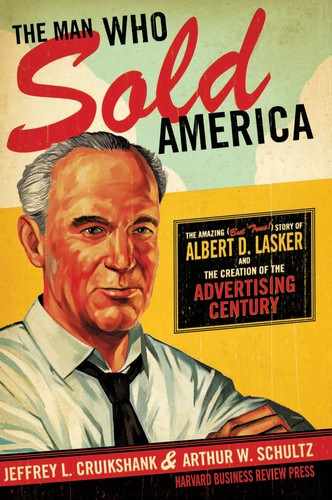A Note on Sources
One Lasker biography already exists: John Gunther’s Taken At the Flood, published by Harper & Brothers in 1960, eight years after Lasker’s death. Gunther was an internationally renowned travel writer who achieved literary significance in 1949 with the publication of Death Be Not Proud, a moving account of his son’s death from a brain tumor. He had known Lasker socially and undertook his biography at the request of Lasker’s widow, Mary.
Taken At the Flood is an engaging piece of work by a skilled journalist who had the great advantage of being able to talk to many of the people who played important roles in Lasker’s life. We have drawn on Gunther’s work extensively and have also dug through his Lasker-related papers at the University of Chicago. Citations in the notes are “John Gunther papers.” Gunther’s original manuscript was closely edited not only by Mary Lasker, but also by all three of Lasker’s children: Mary, Edward, and Francie. Another half century has passed, and all of the principals are now dead, so we have reinstated details that the Lasker family removed from Gunther’s manuscript. But for readers interested in seeing another side of Albert Lasker, Taken At the Flood remains an indispensable resource.
In addition, we have drawn extensively upon a very special resource in coauthor Schultz’s collection: hundreds of pages of verbatim transcripts generated in the late 1930s for a Lasker autobiography that was never completed. From the biographer’s standpoint, having uncensored access to a long-dead subject’s mind is a windfall—almost literally, a gift from the beyond—and we have taken full advantage of it. Much of the material in the following pages, especially Lasker’s first-person observations about his own life, has never before seen the light of day. The ghostwriter’s name was Boyden Sparkes; we abbreviate these citations as “Sparkes” (denoting a Lasker interview) or “Sparkes interview with _________.” Where dates and page numbers are available, we have provided them.
Both Albert and Mary Lasker gave interviews to Columbia University’s oral historians. By historical coincidence, Mary Lasker’s reminiscences take up almost exactly where Albert’s conversations with Boyden Sparkes left off, and are therefore invaluable. We have drawn heavily on these interviews, and thank Columbia for their permission to do so.
Also interesting, and not entirely fact-based, is The Lasker Story: As He Told It, a little volume published in 1963 by Advertising Age. It is an edited transcript of a marathon lecture that Lasker delivered extemporaneously to his Lord & Thomas colleagues in April 1925.
As with most unstructured oral histories, these various first-person accounts raised almost as many questions as they answered. To sort out Lasker fact from Lasker fiction, we consulted a number of archives that provided additional perspectives on Albert Lasker and his times, including W. G. Irwin’s extensive correspondence, repositories in Texas, the Harding presidential collection in Ohio, the Will Hays papers in Indianapolis, Margaret Sanger’s papers at Smith College, the American Jewish Archives, the Don Francisco papers at the Syracuse University Library, the Joseph P. Kennedy collection at the Kennedy Library, the Roosevelt archives at Hyde Park, and the official records of the Shipping Board in Washington. This latter collection contains a wealth of personal and family materials; we are fortunate that no one ever bothered to cull out these personal papers from the government’s official record. In fact, to our knowledge, no one has looked at this material since Albert Lasker happily fled the nation’s capital in the late summer of 1923.
